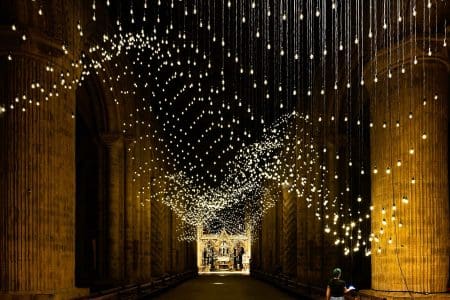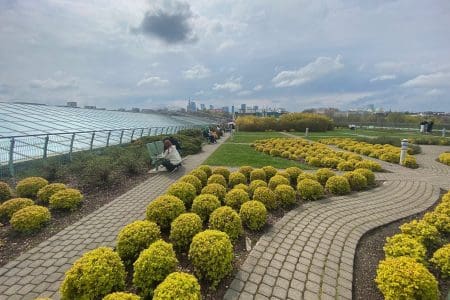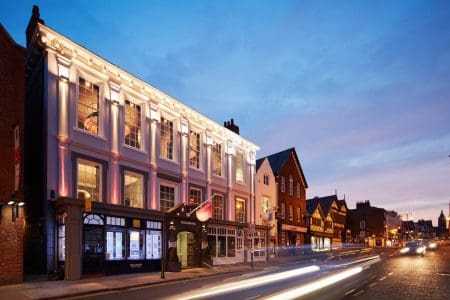Mark Bibby Jackson goes on an architectural journey through Buffalo visiting Silo City, Martin House, the City Hall and Theodore Roosevelt Inauguration Site.
It is a line I am going to hear many times on my journey through the northeastern states of the US. “It all started with the opening of the Erie Canal in 1825.” The first time it is from Paul McDonnell, co-founder and president of the Campaign for Greater Buffalo History Architecture and Culture. He has kindly agreed to show me around Buffalo before we both visit Silo City.
The canal linked the Hudson River to Lake Erie, creating a navigable waterway from the Atlantic to the Great Lakes. It ended – or started depending on your viewpoint – in Buffalo.
Growth of Buffalo New York State
By the turn of the 20th century Buffalo was the eighth largest city in the US, according to Paul. Now it is the 78th, slipping into serious decline in the latter part of the 20th century as the country’s transportation network opened up.
It was at Buffalo that cargo was unloaded off the smaller boats which plied the canal before being loaded onto the larger ships that sailed across the lakes. The other way, boats sailed up from the Midwest along the Mississippi laden with grain that was then milled at the massive grain elevators to be shipped east.
This is what made Buffalo into one of the richest cities in the United States, and the world towards the end of the nineteenth century. Large villas stand testament to its incredible wealth. Paul indicates these to me, although our primary focus is the Brutalist architecture that developed around the town.
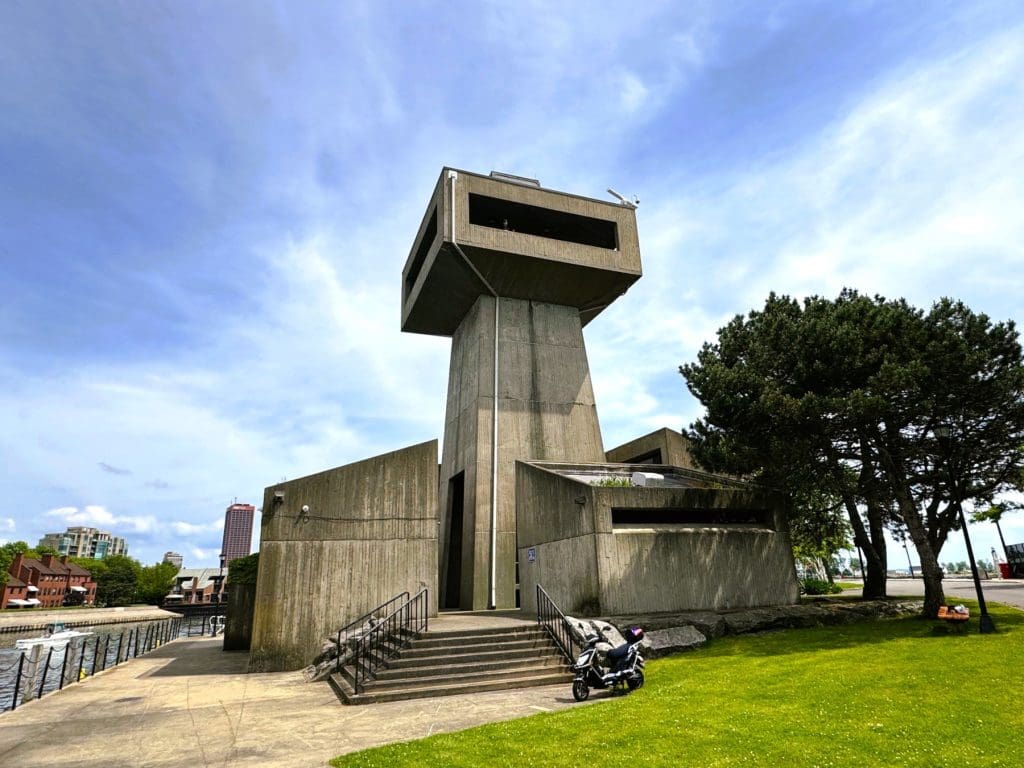
Possibly the best example of Brutalist architecture in Buffalo is the Viewing Tower, built in 1974, which overlooks the Niagara River and Canada. Other examples such as the Court House next to the City Hall only serve to fuel anti-Brutalist arguments.
Silo City
Close to Silo City, Paul stops his car beside one of the waterways. Ahead of us stand vast grain elevators, cast in concrete, like temples to an industrial mammon.
“This is Elevator Alley,” Paul says, “an urban Grand Canyon.”
On one of the waterways, people are kayaking, an indication of how the area is being reclaimed by the local population. Earlier Paul had shown me Commercial Slip, which used to be the last lock on the canal. It stood derelict for years, but in the last couple of decades has been regenerated. Apparently, locals flock here in droves at weekends.
Buffalo used to be one of the largest grain milling towns in the world. Much of the milling was in Silo City. Its current owner Rick Smith greets us at Duende, a bar he created out of the industrial detritus including old railway tracks.
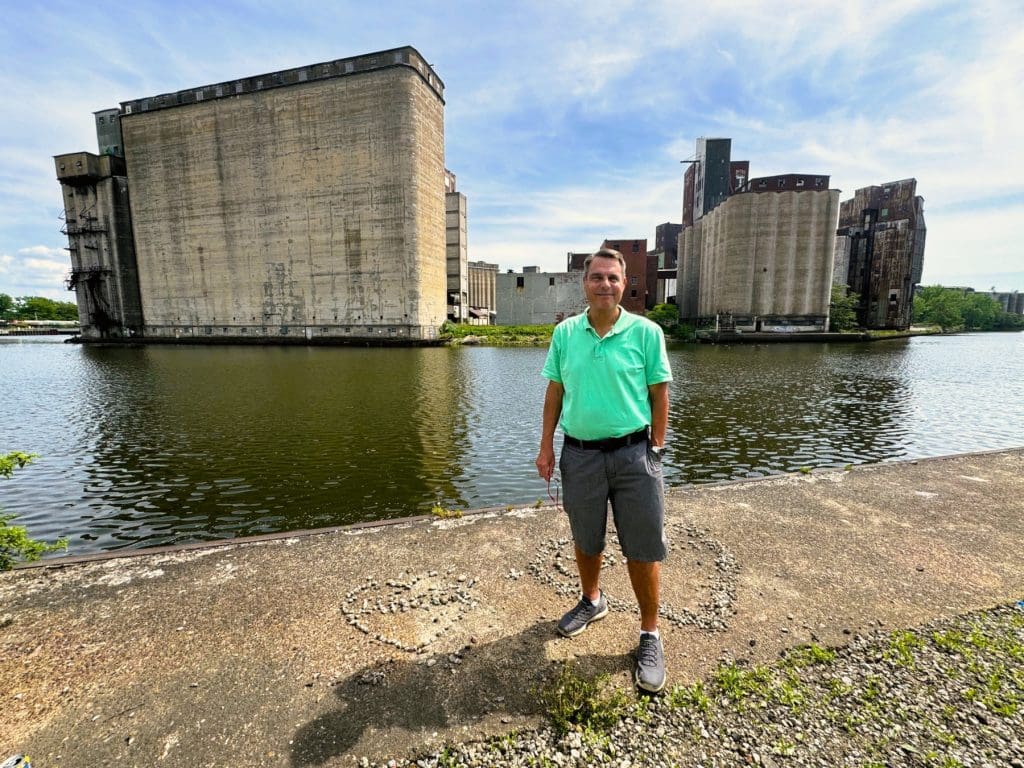
The scale is simply mesmerising. You could build a small city within its confines. Its architectural impact was significant. Mendelsohn and Gropius visited Buffalo to see the vast concrete silos and grain elevators. Le Corbusier sketched them. Paul argues they could be considered the inspiration for modern architecture.
The last silo was closed in 2001, but Buffalo was long in decline before then. Most of the businesses here closed between the 60s and 80s. Rick has breathed new life into the complex. In addition to the attractions of Duende bar and neighbouring Watu Cantina, music is played outside at weekends. They also have installations within one of the silos, as well as concerts, and the Silo City Reading Series. I am shown inside, the acoustics are amazing.
Perhaps the most important project at Silo City is the wilding of previous railway land. As we wander across the green oasis, it is hard to imagine 30 years ago this was all industrial. As Rick points out 500 years before that it would have been a flood plain. The intention is to give the land back to nature, and the current emphasis is on indigenous plant species, although much of the wilding has been natural without human intervention, which helps biodiversity.
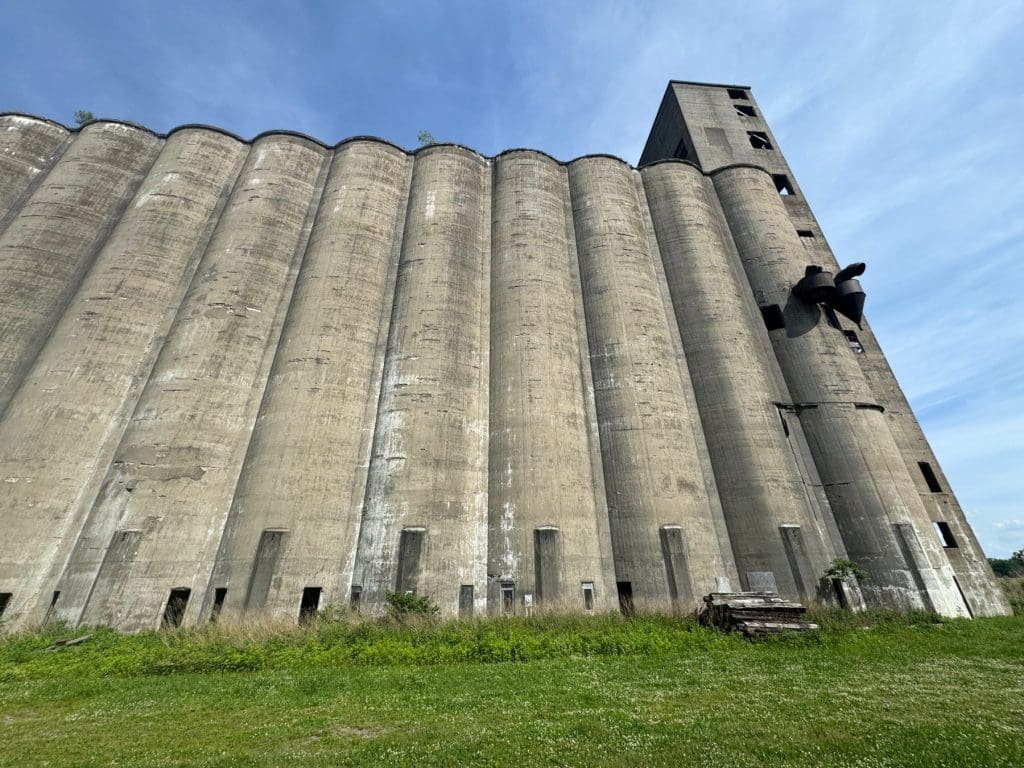
Martin House
In its prime, Buffalo attracted many wealthy people, who then hired leading and aspiring architects to create their grandiose office buildings and dream homes.
At the beginning of the last century Frank Lloyd Wright, then a rather unknown architect, was invited to build the Larkin Building and the Martin House for Darwin Martin, who worked for the company. Although the former building was demolished in 1950, the latter still stands. It is here I head to on my second day for a tour.
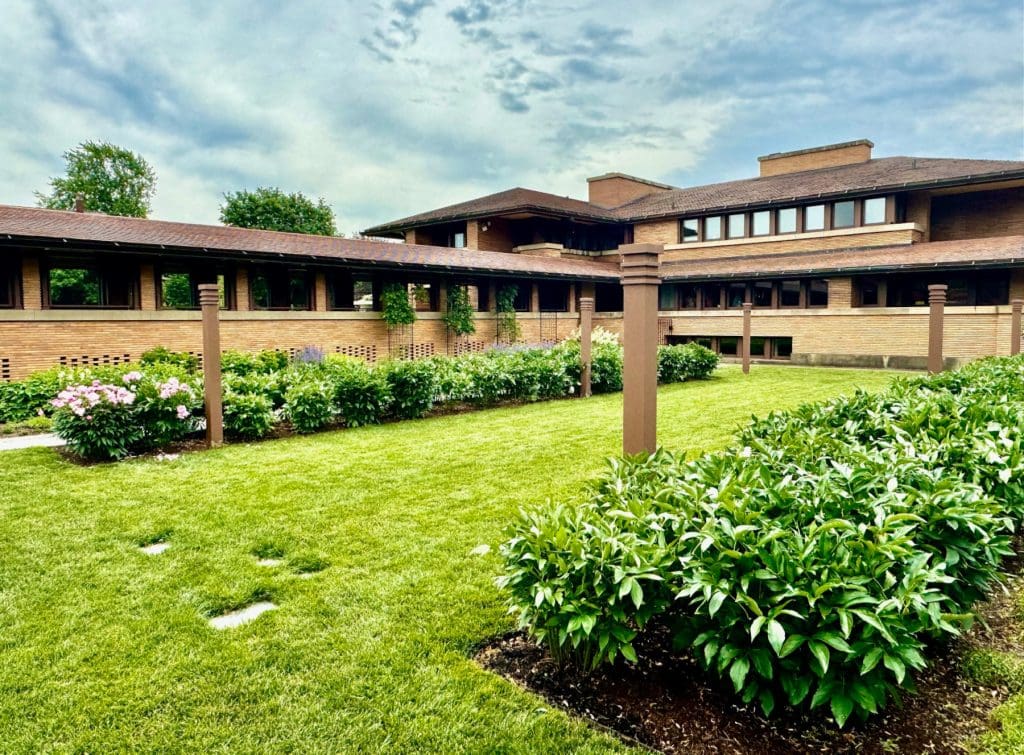
Martin House is one of Wright’s prairie style houses. The idea was to break the box of conventional vertical Victorian buildings by creating horizontal lines throughout the building.
Wright strove for continuity between interior and exterior. The choice of material was very important, and he used the same materials inside the building as outside. While art nouveau architecture created dreamy interiors, Wright brought the outside into the building, thus accomplishing an organic design. Perhaps the most famous feature of Martin House is the Tree of Life which consists of 1,500 pieces of glass.
Buffalo City Hall
Like much of Wright’s work, Martin House came massively over budget. The same cannot be said for arguably Buffalo’s most impressive building.
Built between 1929 and 1931, Buffalo City Hall is the second largest city hall in the United States. Designed by local architect John C Wade, with 33 stories and 393 feet high the art deco masterpiece dominates Niagara Square in the heart of the city.
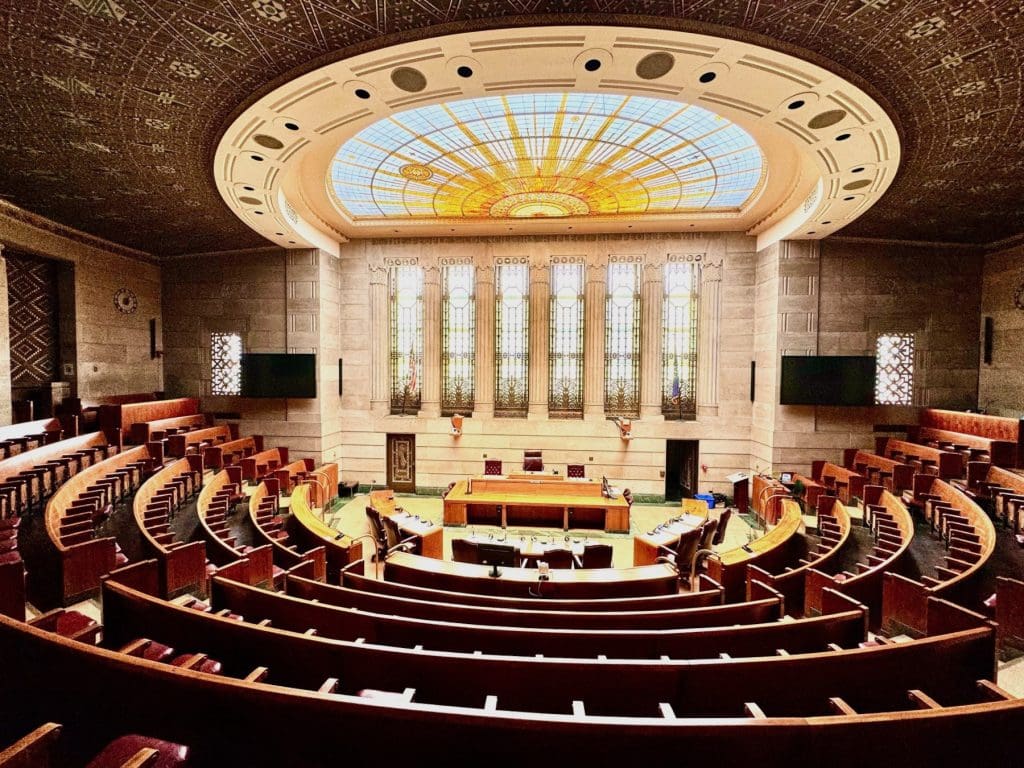
As overwhelming as it is from the outside, this wanes when compared with its interior as I discover on my Buffalo City Hall tour.
The lobby murals created by William de Leftwich Dodge tell the story of Buffalo, while the art deco statues are supposed to remind functionaries of their civic duties. The artwork which incorporates many native American symbols is amazing, particularly around the lift shafts. If Brutalism is about functionality over art, then Buffalo City Hall is as non-Brutalist as you can get. It is a cathedral to civic administration.
Its most impressive room is the council chamber which has an incredible glass roof that reflects the solar system. It is astonishingly beautiful. It is easy to imagine many a councillor’s gaze drifting up to the light during particularly ponderous meetings – so perhaps it is functional after all. Our tour of the City Hall ends at the viewpoint at the top of the building from which you can see all of Buffalo and across to Canada.
JFK has a statue inside Buffalo City Hall – apparently, he made a speech on its steps when running for the Presidency. But Buffalo is more famed for another president who was assassinated in the city.
Death of a President
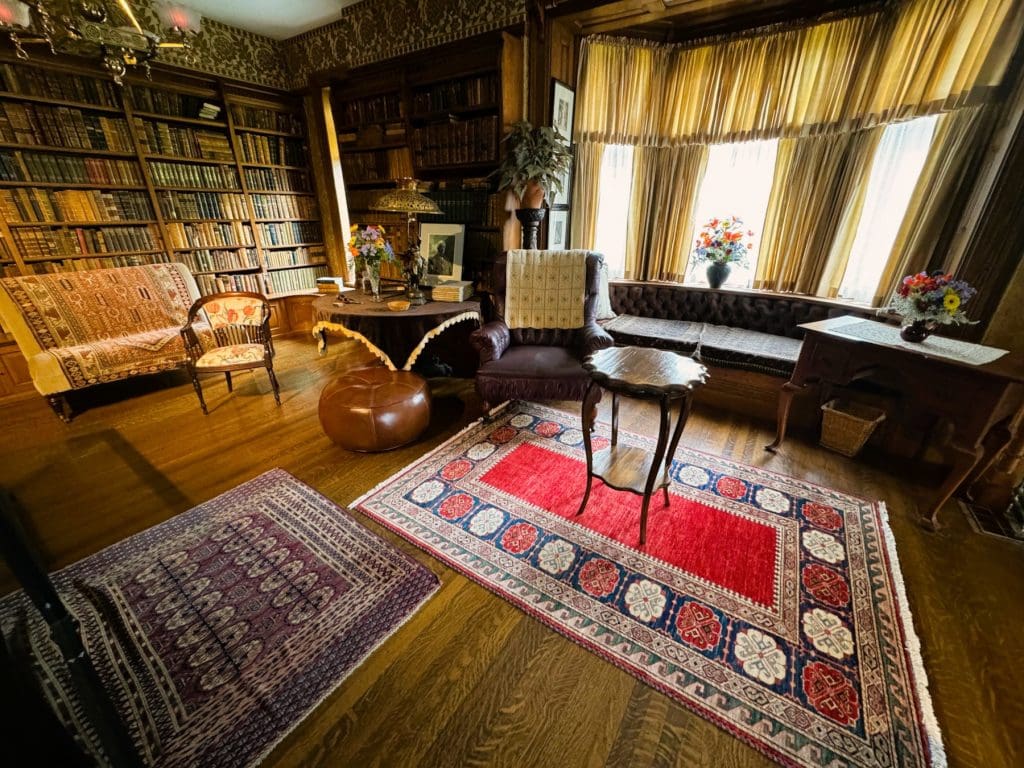
At the centre of Niagara Square stands a monument to President William McKinley, the 25th President of the United States, who came to Buffalo for the 1901 Pan-American Exposition, a World Fair. The intention was to showcase Buffalo and in particular its electricity created from nearby Niagara Falls, but unfortunately this was rather upstaged by the shooting of the president by 28-year-old anarchist and unemployed factory worker Leon Czolgosz on 5 September.
McKinley died eight days later from complications while his vice president Theodore Roosevelt was up country.
Roosevelt rushed to Buffalo where he was inaugurated at the house of Ainsley Wilcox, which has been turned into the Theodore Roosevelt Inauguration Site. After our Buffalo City Hall tour, we head here for the most incredible experience, which includes my sitting at a desk where I am photographed making my initial Presidential pledge, apparently nationality requirements for becoming the President of the United States have recently been waived.
Richardson Hotel
The final building on my architectural tour of Buffalo in many respects should have been my first.
In Laos, I once stayed in a former prison, but the Richardson Hotel was the first time I had stayed in a former mental institution.
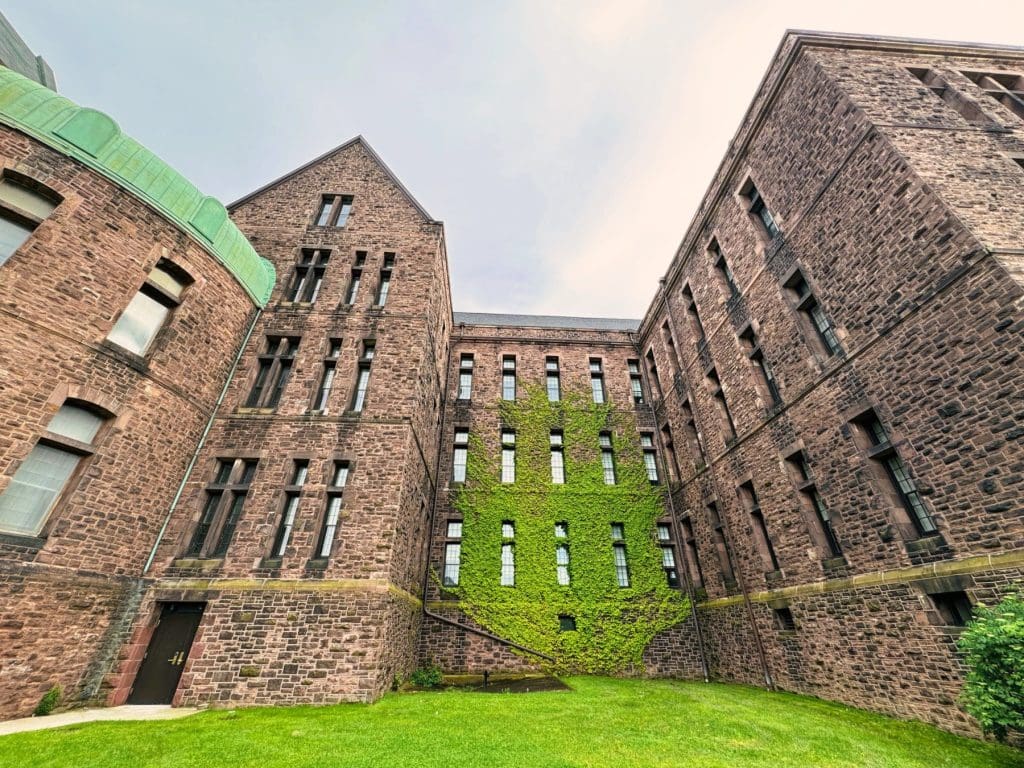
The 19th century saw the advent of insane asylums in the United States, especially after the horrors of the American Civil War. The gold standard was set by Thomas Story Kirkbride who recommended patients should be housed in humane conditions in rooms with tall ceilings and large windows from which they could see nature. The focus was on natural healing rather than incarceration.
In 1869, the architect Henry Hobson Richardson was appointed to build an asylum in Buffalo, where he worked with the landscape designer Olmsted who landscaped Central Park in New York. The lands were expansive, even including a farm where the patients could work. This was a holistic approach to healthcare creating a healing pastoral setting. The first wing opened in 1880, after which Richardson died, and attitudes towards health care had sadly moved on.
Eventually, the campus consisted of 40 buildings, in which 3,500 patients were contained rather than cured. Like the rest of Buffalo, the second half of the century did not look kindly upon the institution, which closed in 1974.
According to Patrick Ryan, the cultural curator of the Richardson Olmsted Campus, the place ran to ruin and was too expensive to be pulled down – a sentiment I hear often in Buffalo.
At the start of this century, the property was handed back to the community and, again according to Ryan, the largest historic preservation project in North America commenced. At its heart is the Richardson hotel, my home during my stay in Buffalo. Within the next couple of years an Architecture Centre should be opened in one of the disused wings.
Ryan is kind enough to show me around the property which is a hybrid of One Flew Over the Cuckoo’s Nest and The Shining though perhaps directed by Tim Burton. They run tours each weekend, which I highly recommend even if you are not staying at the hotel.
My architectural tour through Buffalo complete, I depart early the following morning by Greyhound bus to Cleveland, the second city on my tour through the northwest of the United States.
Where to Eat in Buffalo?
Vegan Buffalo Wings
Buffalo is known for its wings. As a non-meat eater I decided to go to Strong Hearts, a vegan restaurant which serves vegan Buffalo wings. We sampled the traditional as well as the hot honey one. Both of these tasted great to me, and got the thumbs up from my carnivorous lunch companion who lives in Buffalo. The Thai tofu salad was spicy and great.
Irish Fish and Chips
Buffalo has a strong Irish traditional. Many of the workers in the mills and on the docks came from the Emerald Isle. So, it is unsurprising to discover many Irish bars as well as a Irish quarter in Buffalo. Gene McCarthy’s is a great local which serves excellent fish and chips, where the fish does hang off the plate, which is the key test according to my guide, food writer Andrew Galarneau.

The Dapper Goose
Slightly more up-market, The Dapper Goose served the best food in town, on my brief visit. The back yard created a great courtyard atmosphere and the food matched. The tuna was amazing, and the relaxed yet efficient service just added to the overall ambience. Try the tuna.
Where To Stay in Buffalo?
Need you ask? Just double check whether Jack Nicholson has booked a room. Historic Hotel in Buffalo NY | The Richardson Hotel Buffalo.
Things To Do in Buffalo
For more inspiration on what to do in Buffalo go to www.visitbuffaloniagara.com.
